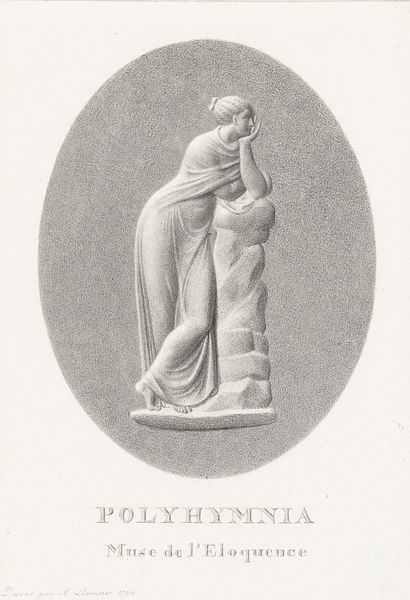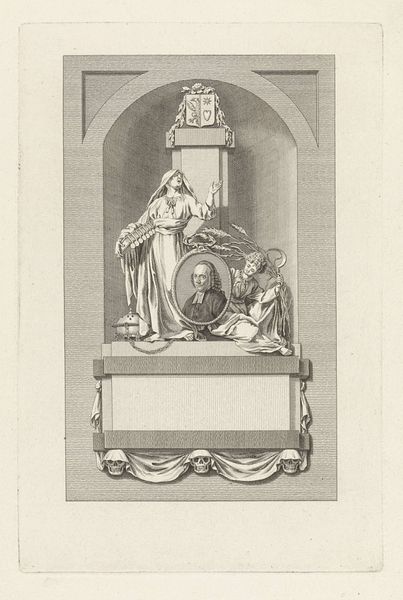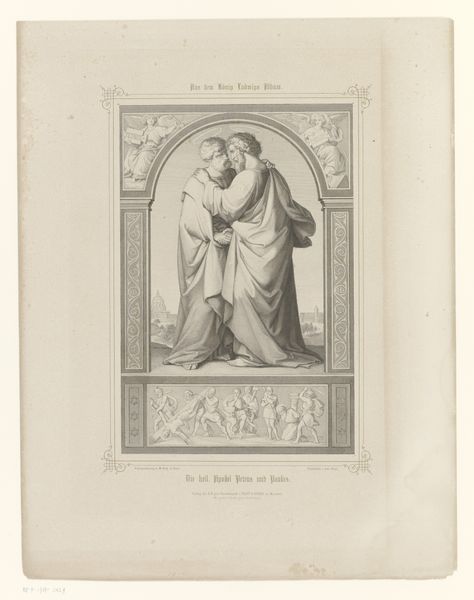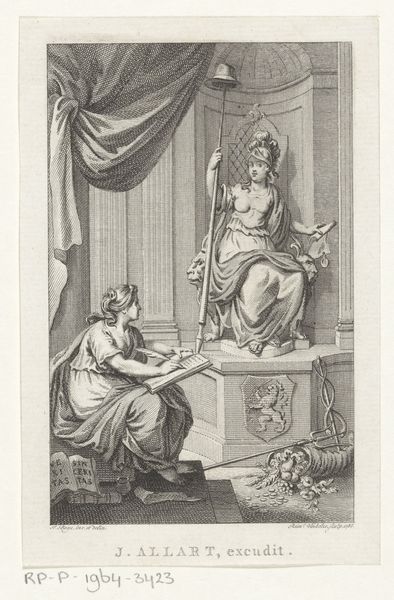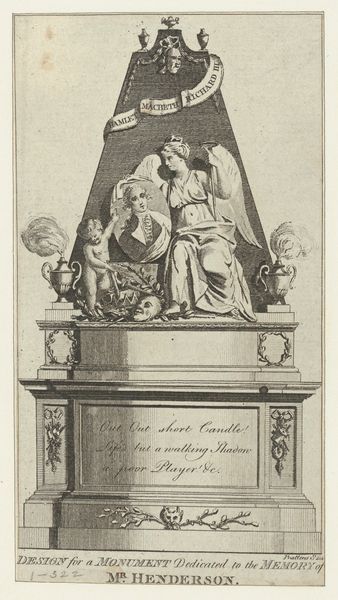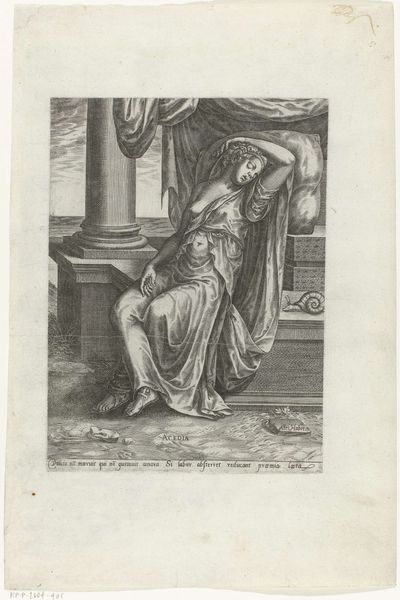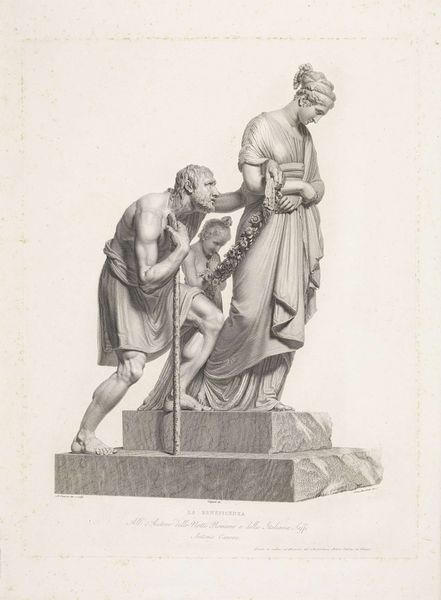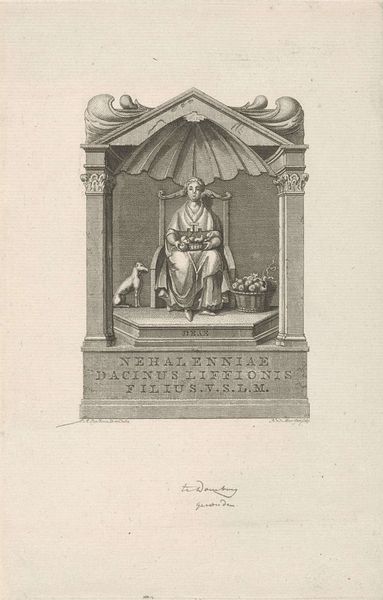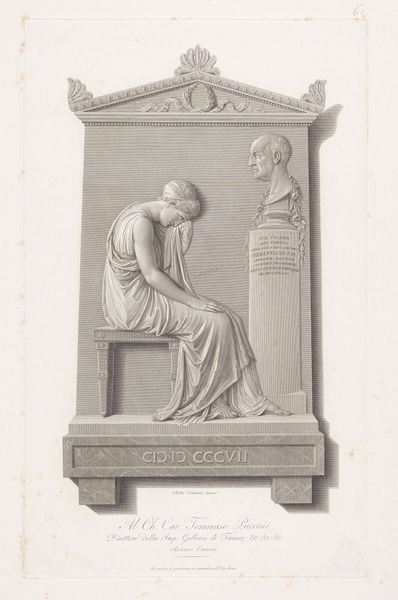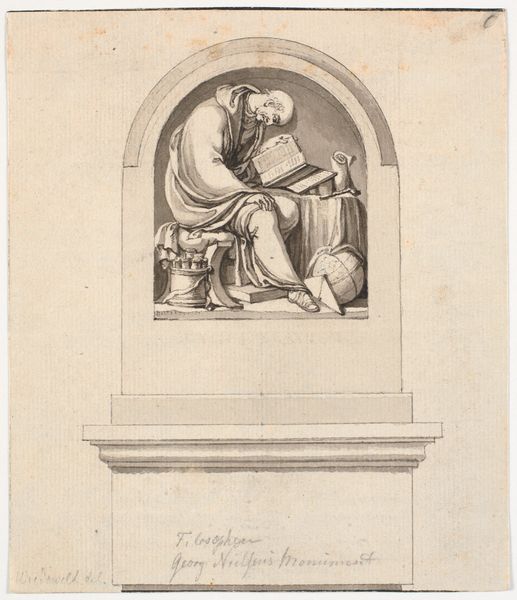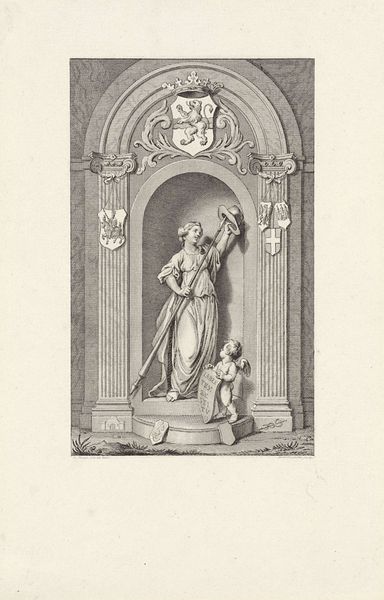
engraving
#
neoclacissism
#
allegory
#
old engraving style
#
classical-realism
#
figuration
#
form
#
classicism
#
19th century
#
line
#
history-painting
#
engraving
#
realism
Dimensions: height 420 mm, width 261 mm
Copyright: Rijks Museum: Open Domain
Editor: This engraving, "Grafstèle van Alessandro de Souza Holstein," created by Angelo Campanella in 1809, presents a scene of profound grief. A woman in classical drapery is weeping beside what appears to be a bust of a man. What do you see in this piece? Curator: This work resonates deeply with the visual language of mourning and memory so prevalent in the Neoclassical era. The figure of the weeping woman is clearly an allegory, a personification of Grief itself, performing sorrow. Notice the stylized drapery: those lines, those folds, tell a story. Editor: So the style is a way to evoke the desired emotional response? Curator: Precisely. Consider the laurel wreath crowning the niche above: it’s a classical symbol of victory and honor, suggesting the deceased held a respected position. But it’s not simply a celebration. Wreaths are potent reminders of the cyclical nature of life and death. Is there anything particularly striking to you about the allegorical figure, beyond her sorrow? Editor: She seems…resigned. Peaceful almost. Not thrashing in anguish. Curator: Exactly. Her stillness represents idealized grief, controlled and dignified, echoing values cherished during that era. See how even sorrow itself becomes a form of visual rhetoric, echoing values from Roman and even earlier Greek art. But consider, too, that her pose has been adopted in our own culture: do you not think the modern funerary statue uses this language even today? Editor: Absolutely! It is fascinating how consistent those symbols are across centuries! I didn't really think of grief having its own symbolic code. Curator: The persistence of these visual motifs across time speaks volumes about the enduring human need to give form and meaning to loss, wouldn’t you agree? Perhaps that engraved allegory serves its function even for us now.
Comments
No comments
Be the first to comment and join the conversation on the ultimate creative platform.

